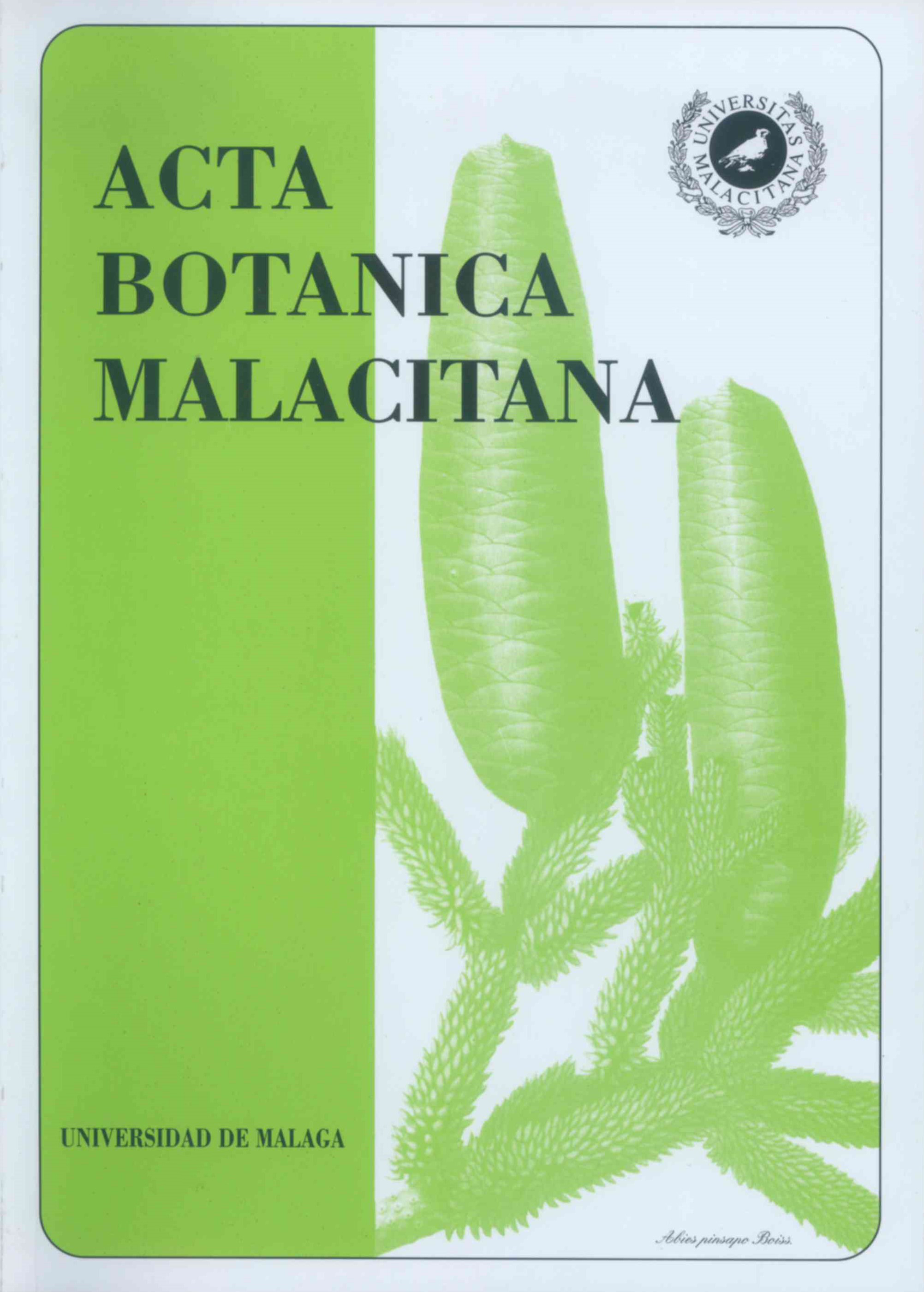La vegetacio?n de la alta montan?a andina del sur del Peru?.
DOI:
https://doi.org/10.24310/abm.v28i0.7271Abstract
RESUMEN. La vegetación de la alta montaña andina del sur del Perú. El presente artículo es un estudio fitosociológico de la vegetación de la alta montaña del sur del Perú (departamentos de Arequipa, Moquegua, Puno y Tacna). En base a la relación existente entre geomorfología, litología, altitud, pisos bioclimáticos, intervalos de precipitación, descripción bioclimática, y la combinación florística en determinados biotopos, fueron diferenciadas las comunidades de 9 clases (Anthochloo-Dielsiochloetea, Calamagrostietea vicunarum, Lantano-Chusqueetea, Lemnetea minoris, Not holaenetea niveae, Phragmito- Magnocaricetea, Plantaginetea australis, Planta gini rigidae-Di.slichietea muscoidis y Potametea). Como resultado, fueron descritos 2 nuevos órdenes (Calamagrostietalia nitidulae y Salpichroetalia glandulosae), 7 alianzas (Azorello-Festucion, Belloo-Salpichroion, Cha etantherion sphaeroidalis, Cortaderion jubatae, Fabianimi stephanii, Hypsello-Plantaginion y Nototrich ion obcuneatae), 10 asociaciones (Belloo- Dissanthelietum, Chersodomo-Valerianetum, Cortaderietuin jubatae, Diplostephio-Parastrephietum, Dunalio-Baccharidetum, Nototricho-Xenophylletum, Parastrephio-Festucetum, Ranunculetum limoselloidis, Stuckenietum punensis y Wernerio-Puccinellietum) y 16 subasociaciones y comunidades fragmentarias (comunidades basales, BC y comunidades derivadas. DC).
Palabras clave. Vegetación, fitosociología, Sur Perú, Andes.
ABSTRACT. The vegetation of the high Andean mountain of Southern Peru. In this paper, a phytosociological study about the vegetation of the mountain of Southern Peru (Arequipa, Moquegua, Puno and Tacna departments) is presented. In base of the relation between geomorphology, lithology, altitude, bioclimatic belts, precipitation intervals, bioclimatic description, and the floristic combination in specific biotopes, communities of 9 classes (Anthochloo-Dielsiochloetea, Calamagrostietea vicunarum, Lantano-Chusqueetea, Lemnetea minoris, Not holaenetea niveae, Phragmito-Magnocaricetea, Plantaginetea australis, Plantagini rigidae-Distichietea muscoidis and Potametea) were differenced. As result, 2 new orders (Calamagrostietalia nitidulae and Salpichroetalia glandulosae), 7 alliances (Azorello-Festucion, Belloo-Salpichroion, Chaetantherion sphaeroidalis, Cortaderion jubatae, Fabianion stephan ii, Hypsello-Plantaginion and Nototrichion obcuneatae), 10 associations (Belloo-Dissanthelietum, Che rsodomo-Valerianetum, Cortaderietumjubatae, Diplostephio-Parastrephietum, Dunalio-Baccharidetum, Nototricho-Xenophylletum, Paras. trephio-Fe.s. tucetum, Ranunculetum 1 imoselloidi s, Stuckenietum punensis and Wernerio- Puccinellienon) and 16 subassociations and phragmentary communities (basal communities, BC and derived communities, DC) are described.
Key words. Vegetation, phytosociology, Southern Peru, Andes.
Downloads
Metrics
Downloads
Published
How to Cite
Issue
Section
License
Those authors who publish in this journal accept the following terms:
a. The authors will retain their copyrights and guarantee the journal the right of first publication of their work, which will be simultaneously subject to the Creative Commons Attribution-Non-commercial 4.0 license whose full text can be found at <http: // creative commons .org / licenses / by-nc / 4.0> that allows third parties to share the work as long as its author and its first publication are indicated, and as long as it is not for commercial purposes.
b. Authors may adopt other non-exclusive licensing agreements for the distribution of the version of the published paper (e.g., deposit it in an institutional telematic file or publish it in a monographic volume) provided that the initial publication in this journal be indicated.
c. Authors are allowed and recommended to disseminate their work through the Internet (e.g., in institutional telematic archives or on their websites) before and during the submission process, which can produce interesting exchanges and increase citations of the published work. (See The effect of open access)







1.png)
